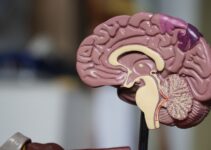Introduction to Behavioral Economics
Behavioral economics is a field of study that combines insights from psychology and economics to understand how individuals make decisions. It seeks to explain why people often make choices that deviate from the predictions of traditional economic theory. By examining the cognitive and emotional factors that influence decision-making, behavioral economics provides a more realistic and nuanced understanding of human behavior.
Studying behavioral economics is important because it helps us understand why people make certain choices and how these choices can impact their well-being. Traditional economic theory assumes that individuals are rational and always act in their own best interest. However, behavioral economics recognizes that people are not always rational and that their decisions are often influenced by cognitive biases, social factors, and emotions. By understanding these influences, policymakers and businesses can design interventions and strategies that nudge individuals towards making better decisions.
The Role of Rationality in Decision-Making
Traditional economic theory is based on the assumption that individuals are rational decision-makers who carefully weigh the costs and benefits of different options before making a choice. According to this view, individuals have complete information, can process this information perfectly, and always act in their own self-interest.
However, critics argue that this assumption of rationality does not accurately reflect how people make decisions in the real world. They point out that individuals often rely on heuristics or mental shortcuts when making choices, which can lead to systematic biases and errors. For example, individuals may be influenced by the way a question is framed or by the default option presented to them.
The Emergence of Behavioral Economics
The field of behavioral economics emerged in the late 20th century as a response to the limitations of traditional economic theory. It sought to incorporate insights from psychology into economic analysis in order to provide a more accurate understanding of human behavior.
Key figures in the development of behavioral economics include Daniel Kahneman and Amos Tversky, who conducted groundbreaking research on decision-making under uncertainty. Their work challenged the assumption of rationality and introduced the concept of cognitive biases. Other influential figures include Richard Thaler, who pioneered the field of behavioral finance, and Cass Sunstein, who explored the role of nudges in decision-making.
The Importance of Understanding Biases in Decision-Making
Biases are systematic errors in thinking that can lead to suboptimal decision-making. They occur when individuals rely on mental shortcuts or heuristics that can lead to predictable patterns of error. Understanding biases is important because they can have significant consequences for individuals and society as a whole.
There are many different types of biases that can influence decision-making. For example, confirmation bias is the tendency to seek out information that confirms one’s preexisting beliefs and ignore information that contradicts them. Anchoring bias occurs when individuals rely too heavily on an initial piece of information when making a decision. Availability bias is the tendency to overestimate the likelihood of events based on how easily they come to mind.
Examples of biases in decision-making can be seen in various contexts. For instance, in financial decision-making, individuals may exhibit loss aversion bias, where they are more sensitive to losses than gains. In healthcare decision-making, individuals may exhibit present bias, where they prioritize immediate gratification over long-term health outcomes.
The Impact of Social Influence on Decision-Making

Social influence refers to the ways in which the thoughts, feelings, and behaviors of individuals are influenced by others. It plays a significant role in decision-making as people often look to others for guidance and validation.
There are several types of social influence that can impact decision-making. Conformity occurs when individuals change their behavior or beliefs to match those of a group. Compliance occurs when individuals change their behavior in response to a direct request or command from another person. Obedience occurs when individuals comply with the orders or instructions of an authority figure.
Examples of social influence in decision-making can be seen in various contexts. For example, in consumer behavior, individuals may be influenced by social proof, where they are more likely to purchase a product if they see others using it. In voting behavior, individuals may be influenced by the opinions of their peers or the media.
The Significance of Framing in Decision-Making
Framing refers to the way in which information is presented or framed can influence decision-making. The same information can be framed in different ways, leading to different perceptions and choices.
There are several types of framing that can impact decision-making. Positive framing emphasizes the potential gains or benefits of a decision, while negative framing emphasizes the potential losses or risks. Attribute framing focuses on how information is presented, highlighting different aspects of a decision. Goal framing emphasizes the alignment of a decision with personal goals or values.
Examples of framing in decision-making can be seen in various contexts. For example, in marketing, companies often use positive framing to highlight the benefits of their products. In public policy, policymakers may use attribute framing to emphasize certain aspects of a policy proposal.
The Power of Defaults in Decision-Making
Defaults refer to the preselected option or course of action that is automatically chosen if an individual does not make an active choice. Defaults have a powerful influence on decision-making because they shape the status quo and require individuals to take action to deviate from it.
There are several types of defaults that can impact decision-making. Opt-out defaults require individuals to actively opt out if they do not want to participate or choose a certain option. Opt-in defaults require individuals to actively opt in if they want to participate or choose a certain option.
Examples of defaults in decision-making can be seen in various contexts. For example, in organ donation, countries with opt-out defaults have higher rates of organ donation compared to countries with opt-in defaults. In retirement savings, companies that automatically enroll employees in a retirement plan have higher participation rates compared to those that require employees to actively opt in.
The Role of Emotions in Decision-Making
Emotions play a significant role in decision-making as they can influence the way individuals perceive and evaluate options. Emotions can be positive or negative and can vary in intensity and duration.
There are several types of emotions that can impact decision-making. Fear and anxiety can lead to risk aversion and avoidance behavior. Happiness and excitement can lead to risk-taking and impulsive behavior. Anger and frustration can lead to aggression and impulsive behavior.
Examples of emotions in decision-making can be seen in various contexts. For example, in financial decision-making, individuals may be influenced by fear of loss or the excitement of potential gains. In healthcare decision-making, individuals may be influenced by anxiety or hope.
The Limitations of Traditional Economic Theory
Traditional economic theory has been criticized for its unrealistic assumptions and limited understanding of human behavior. Critics argue that the assumption of rationality does not accurately reflect how people make decisions in the real world. They also argue that traditional economic theory fails to account for cognitive biases, social factors, and emotions that influence decision-making.
Behavioral economics is important in addressing these limitations because it provides a more realistic and nuanced understanding of human behavior. By incorporating insights from psychology, behavioral economics recognizes that individuals are not always rational and that their decisions are often influenced by cognitive biases, social factors, and emotions.
The Future of Behavioral Economics
The future of behavioral economics holds great potential for further research and application. There are several areas that researchers can explore to deepen our understanding of decision-making. For example, researchers can investigate the role of cultural differences in decision-making and how these differences influence behavior.
Behavioral economics also has an important role to play in shaping public policy. By understanding the cognitive biases and social factors that influence decision-making, policymakers can design interventions and strategies that nudge individuals towards making better choices. For example, policymakers can use defaults and framing techniques to encourage individuals to make healthier or more sustainable choices.
In conclusion, behavioral economics provides a valuable framework for understanding decision-making. By incorporating insights from psychology, it offers a more realistic and nuanced understanding of human behavior. Understanding biases, social influence, framing, defaults, and emotions can help us make better decisions and design interventions that promote well-being. The future of behavioral economics holds great potential for further research and application in shaping public policy.



